OMG The Crazy Reason You Should Stop Tossing Your Beauty Products In The Garbage
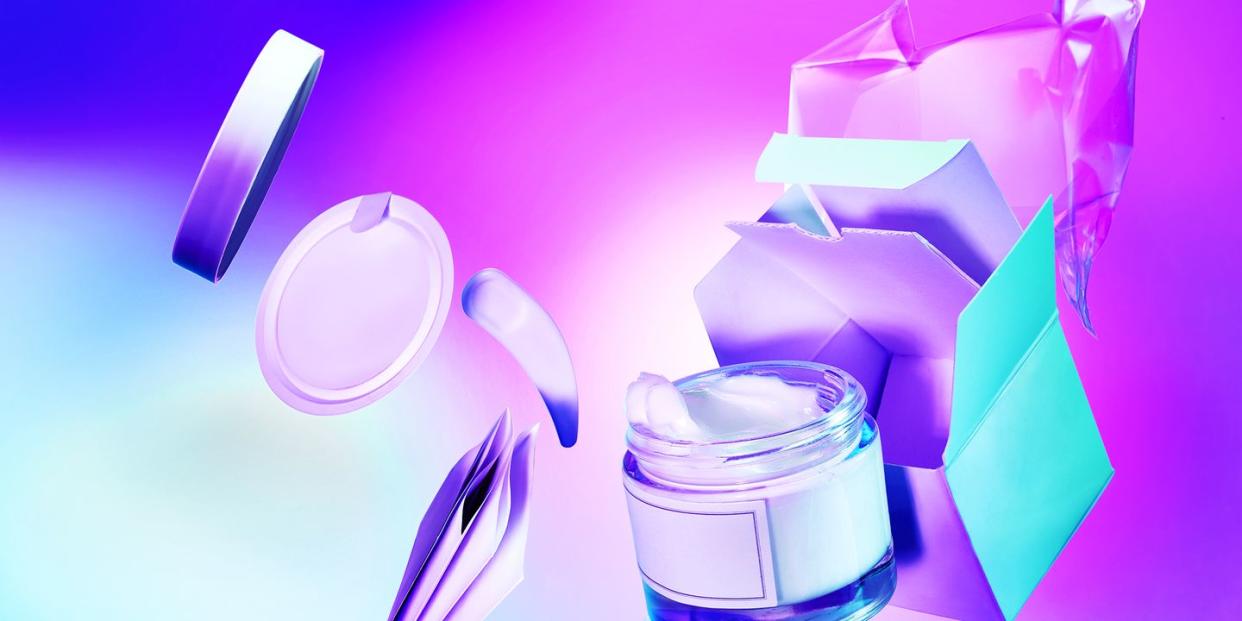
One unboxing can reveal a lot: cellophane wrapping, external and internal cardboard containers, paper pamphlets, multiple plastic or metal components-and that’s before you even reach the product itself. All that excess adds up: Packaging and container waste account for 21 percent of the material in U.S. landfills, according to the Environmental Protection Agency. But thanks to a growing number of eco-minded brands, you don’t have to pick between your skin-care stash and helping the planet. Here’s your go-green guide.

What exactly is sustainability?
To put it simply, sustainability means fulfilling the needs of the current population without getting in the way of future generations. When it comes to the beauty industry, every step of a product's life is factored in, from ingredient sourcing to production-and, of course, what we do with our products once they're gone. And these eco solutions begin long before a product hits store shelves. Brush up on three steps that really matter:
1. Raw ingredient sourcing
Traceability (tracking something back to its origins) is a major issue when a brand is acquiring raw ingredients, especially if it’s purchasing items like palm oil and cocoa butter, which have been linked to poor labor practices and deforestation. If a product contains fair-trade ingredients (more on what that means below), that’s a sign of good traceability. Without that certification, it’s hard to know where a product is from, who’s harvesting it, or the employees’ working conditions.
At Lush, they buy exclusively fair-trade, organic cocoa butter. “We end up paying more than we would for conventional, non–fair trade butter, but we can feel good about the social and environmental impact,” says Heather Deeth, ethical buying manager at Lush.
2. The production process
Manufacturing plants generate immense waste and leave a big carbon footprint. In fact, the industrial sector accounts for about 22 percent of all U.S. energy consumption (manufacturing is the culprit for about three-quarters of that). To offset emissions, many companies are striving for a carbon-neutral state. This means they either release no carbon dioxides (CO2) into the atmosphere, or any CO2 that is released is balanced out by a reduction elsewhere.
Aveda’s energy comes in the form of wind, a clean, renewable source of power that doesn’t emit any CO2 into the air. The brand’s wind turbines generate 100 percent of the energy used to create products.
3. Shipping the products
Products don’t magically appear in stores. They need to be shipped from their production sites to shops around the country or the world. Whether they get there by ground, air, sea, or all of the above, each transportation method takes energy.
Haircare brand Kevin Murphy took this into consideration when creating its rectangular products, which are designed to be packed tightly together, allowing more products to fit in a single box. In fact, the box-shaped bottles use 40 percent less resin and require fewer boxes than their standard cylindrical counterparts.
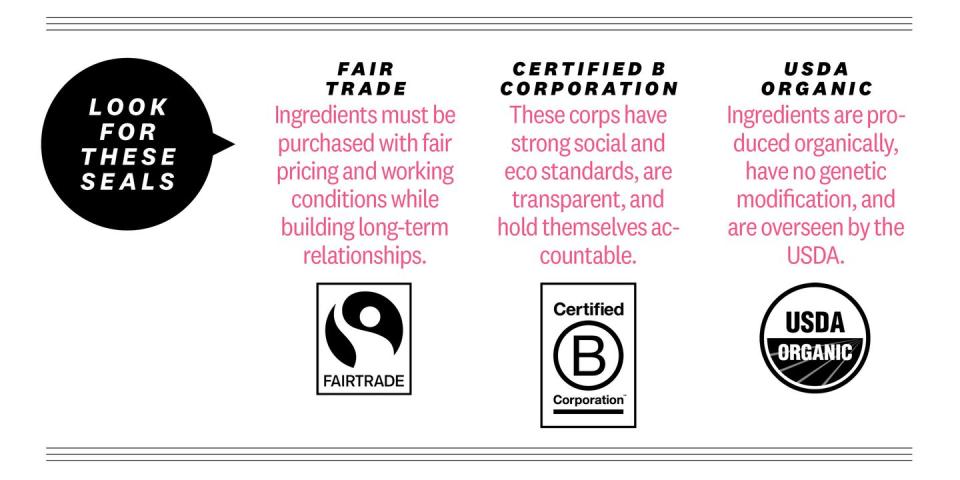
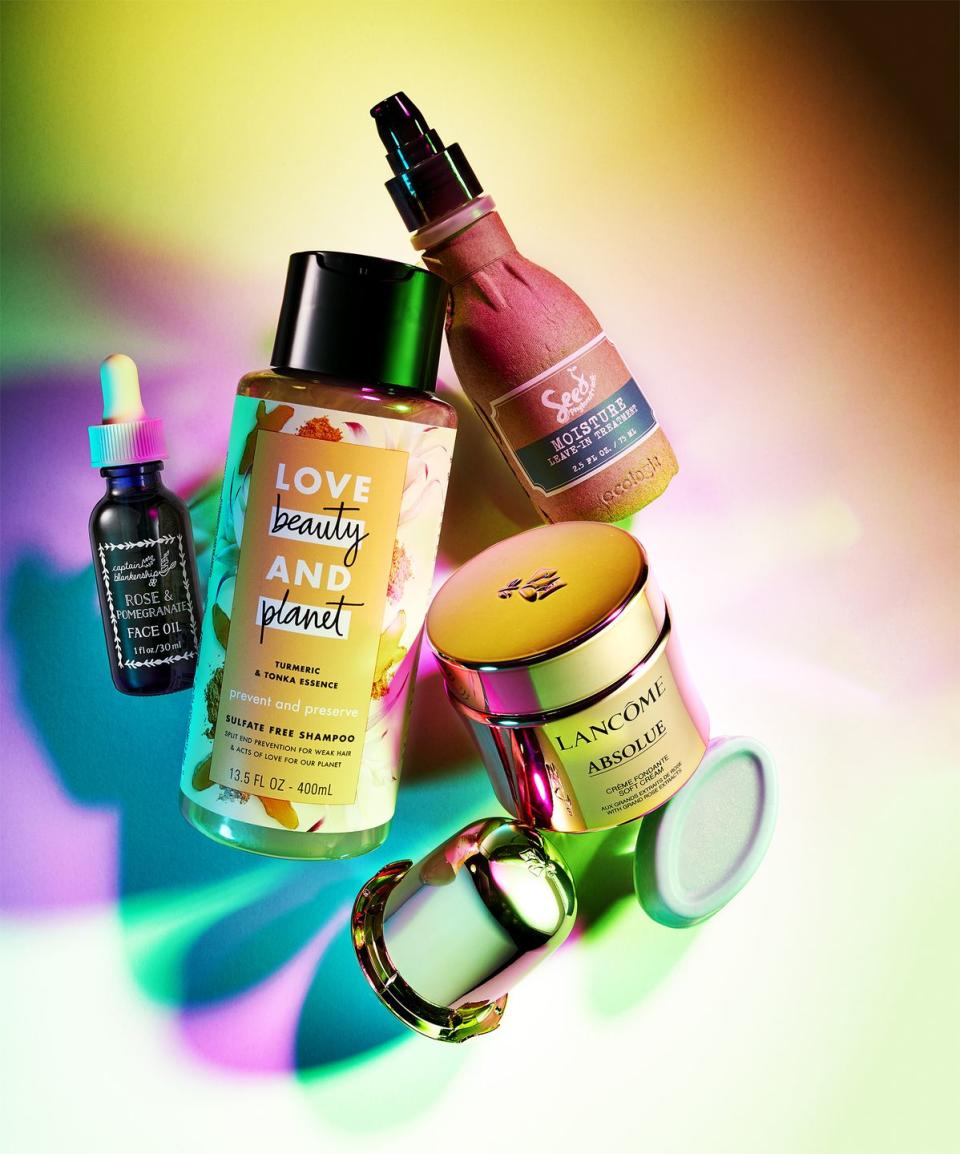
5 easy ways to make smarter product swaps
The global cosmetics industry produces approximately 120 billion units of packaging every year, according to Euromonitor. Plastic is the worst culprit of them all. So the next time you’re scanning the aisles-or your feed-for a new beauty find, look for something housed in one of the below alternatives.

The right way to recycle your #empties
1. Empty, rinse, and dry the container
These extra steps might sound tedious, but they can prevent your products from ending up in a landfill (the average person in the U.S. creates 4.5 pounds of trash per day!). Your local recovery facility sells your recyclables to a third party that handles all the processing. A load that is dirty or damp can be turned away and sent straight to the trash, so consider going the extra mile and peel off the labels. “Recycling facilities have a certain percentage of contamination that they will accept,” explains Shannon Bergstrom, sustainability manager at Recycle Track Systems, but it’s best to keep contamination to a minimum to be safe.
2. Check your local green laws
Depending on where you live, your state might mandate dual-stream (separating your metal, glass, and plastic from your paper) or single-stream (it can all go in one bin) recycling. To make matters more confusing, what is considered recyclable is also not consistent from region to region. Bergstrom recommends checking your government’s website for info, especially for plastics, which are common in beauty products. Speaking of which…
3. Know that all plastics are not equal
“Rigid plastics, like shampoo bottles and moisturizer jars- really, anything that keeps its shape-are recyclable,” says Bergstrom. “But soft plastics, like product wrapping or even shopping bags, are not readily recyclable.” As a best practice, keep your plastics separate so you can sort through them easily and get the most accepted material into the recycling bin and out of landfills.
4. Understand that size really does matter
Anything smaller than your fist should go in the trash bin. “Too small and it will fall through the recycling plant’s infrastructure and is less likely to be recycled,” explains Bergstrom, who also recommends leaving on any caps and nozzles so they don’t get lost. For smaller beauty products, try niche recycling companies like TerraCycle, which specializes in hard-to-recycle products and provides easy-to-use, free shipping labels thanks to its partnership with Garnier. Many brands also have take-back programs, like Origins stores, which accept cosmetic empties from any brand. Brands like Lush and M.A.C even offer perks for bringing back certain empties.
5. Triple-check your sortings
As a general rule, Bergstrom says, when in doubt, throw it out. It might seem counterintuitive, but putting questionable items in your recycling bin can contaminate an entire load, leading it right to a landfill.
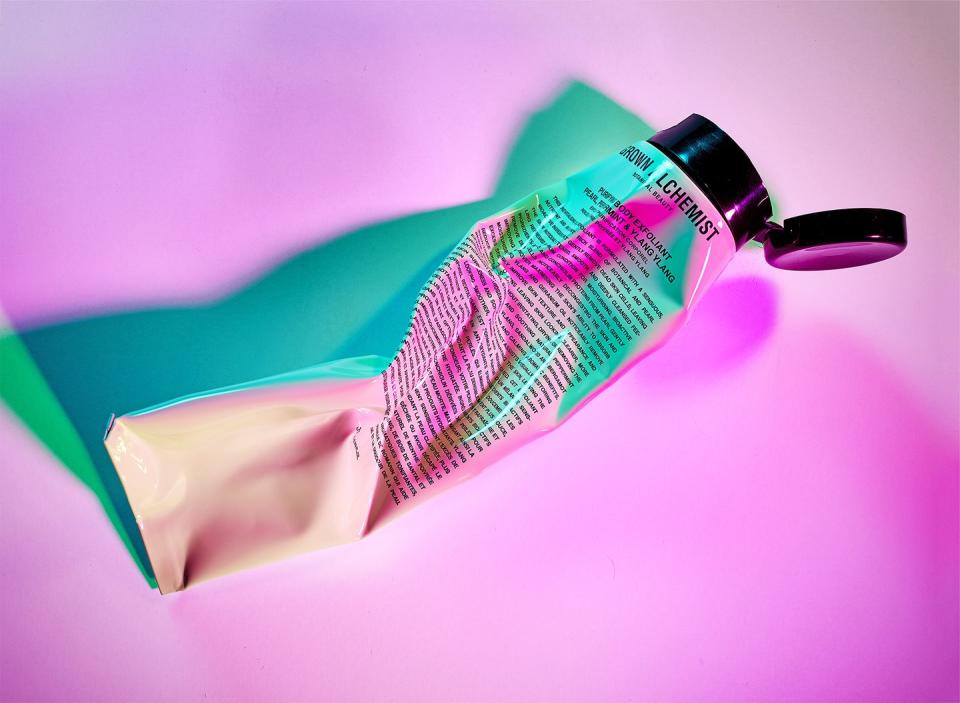

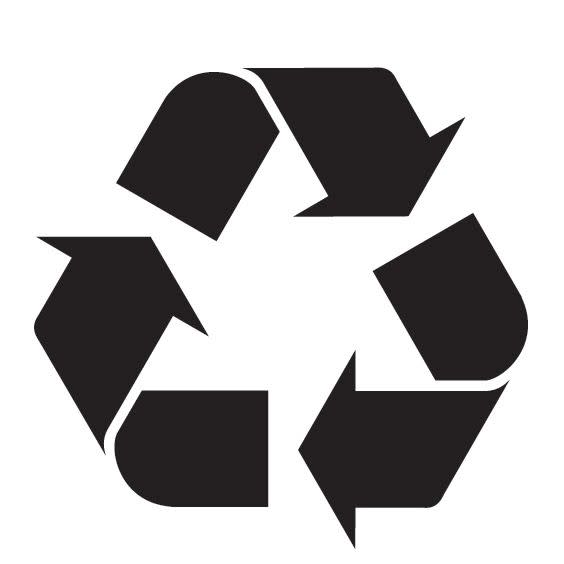
This triangular trio of arrows, AKA the mobius loop, can be found on the bottom or side of products. If you spot it, that means the item is recyclable if (and that’s a big if) the material is accepted in your region. And if the logo has a numbered percent inside, it indicates the amount that was made from recycled material.

So you've finished a product. But can you recycle it?
Metal Tubes: Yes. Products housed in containers made from aluminum (like Grown Alchemist Purifying Body Exfoliant, above) are recyclable everywhere. Once they are empty, cut open the tubes to make cleaning them much easier.
Pump Bottles: Partly. Inside that plastic pump is a non-removable metal spring that makes recycling nearly impossible. It’s best to toss the pump, but the rest of the bottle should be good to go.
Nail Polish: No. It falls into the hard-to- recycle category and is best left to the pros at take-back programs.
Compacts: No. Especially if it includes a mirror (the reflective coating makes the glass non-recyclable) or a magnetic closure (magnets are never recyclable).
Hair Spray: Yes. Just make sure the can is empty first, otherwise it’s considered household hazardous waste, which requires a separate disposal process.
Lip Gloss: No. The tubes are often too small for traditional recycling plants, plus the applicator can include upwards of three different materials, which are almost impossible to separate and sort before being recycled.
Brushes: No. Like gloss, they are made from multiple materials, which are glued together. Instead, take good care of your existing brushes so you’ll need to replace them less often.

Photographed by Jeffrey Westbrook
('You Might Also Like',)

